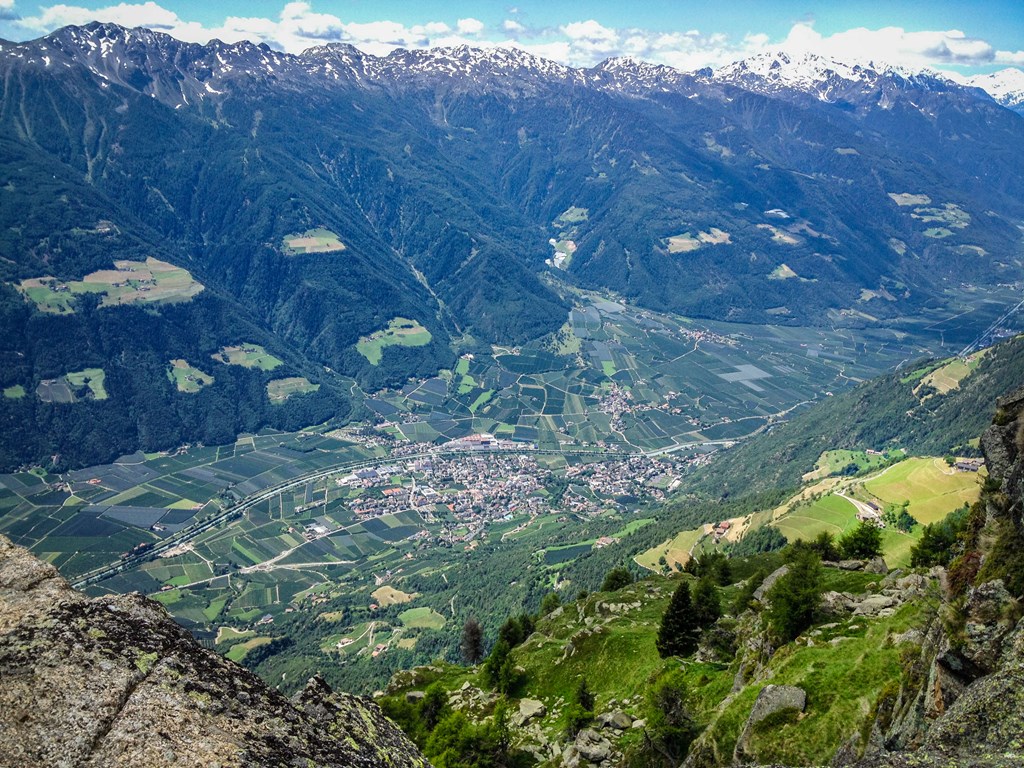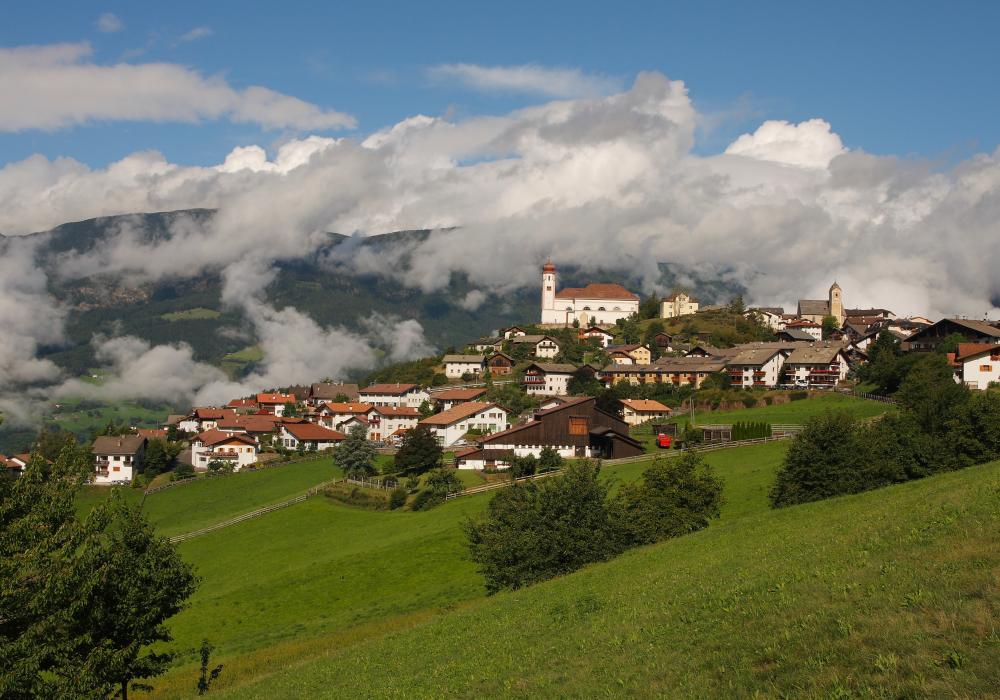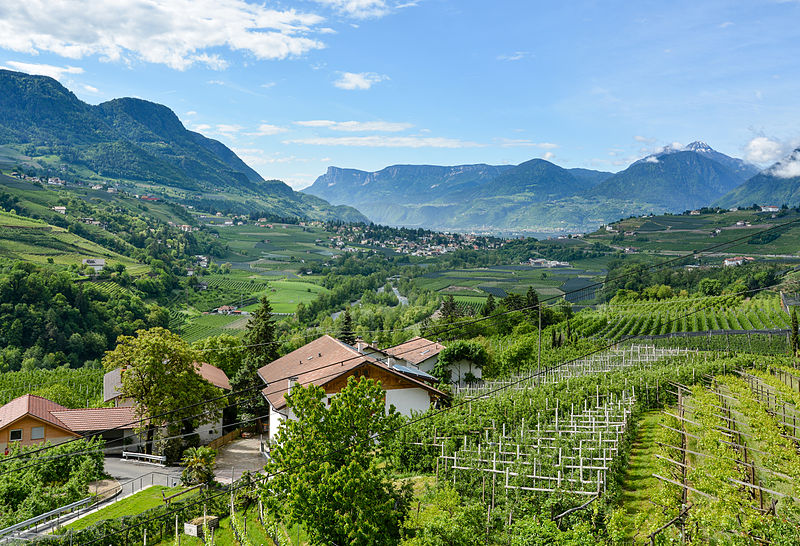How to reach Laces
Attractions:
– Menhirs and Cupule Rocks | Laces
– Castle Annenberg | Laces – Val Martello
Activities:
– AquaForum | Laces
– Climbing Crag | Laces
– Archery | Laces
The apple orchards of South Tyrol surround the lively centre of Laces/Latsch. Here, in the heart of the Venosta Valley at an altitude of 639 m, is where the mild Mediterranean-Alpine Adige Valley meets the dry and sunny climate of Monte Sole mountain. Gradually, Laces became a major fruit-production centre, as well as a centre for tourism and the retail trade.
In Laces, there are also a wide range of recreational activities and cultural itineraries. Besides the numerous churches and old farms, there are relics of prehistoric times. There is a wealth of information available for those interested in culture such as guided tours to historical castles and old churches.
Besides culture, there is also a broad spectrum of recreational and sporting activities, such as the Aqua Forum in Laces. Both experienced and amateur cyclists and hikers will find an intricate network of well-marked trails with several rest stops around Laces.
Mountain Holidays
Hiking biking and mountain hiking. Laces/Latsch and the steep Val Martello are regarded as a hiking and biking haven in Venosta Valley, with trails leading from the vineyards to the Laces glacier and back. What’s more, there is a magnificent view of the valley.
Those keen on activities in the outdoors will enjoy exploring the trails that run alongside the ancient irrigation channels in the Venosta Valley. There are also relaxing excursions to the Alpine pastures and dairy farms in addition to a number of challenging high mountain trails and hiking routes around the Ortler Alps. Bordering the extensive Stelvio National Park amidst the mountainous landscape of Val Martello is a system of hiking trails running through the pristine environment. During the mild spring and in autumn, the sun-kissed Monte Sole mountain near Laces is ideal for relaxing excursions.
Besides the network of hiking and biking trails, the wide range of outdoor sporting options in the Laces and Val Martello holiday region include climbing, river rafting, tennis, swimming and sheer fun in the Laces AquaForum pools creating a total outdoor summer holiday experience.
Culture and arts
Where the Lower Venosta Valley with its Alpine-Mediterranean character meets the rugged Upper Venosta Valley there is Laces/Latsch, a lively cultural and fruit-farming centre boasting numerous examples of old architecture.
The Stelvio National Park is the largest protected area in Italy and the second-largest nature reserve in size in the Alpine region. Besides Laces and Val Martello, there are eight other municipal districts falling under the jurisdiction of the Stelvio National Park in South Tyrol, including Stelvio/Stilfs, Prato/Prad, Silandro/Schlanders and Ultimo/Ulten, spaced around the highest mountain in the region.
Numerous old castles and fortresses testify to the diverse cultural history of the Venosta Valley region. Many fortresses were saved from destruction through their utilisation and restoration; others such as ruins and architectural leftovers from the past now serve as cultural artefacts or as prized excursion destinations.









